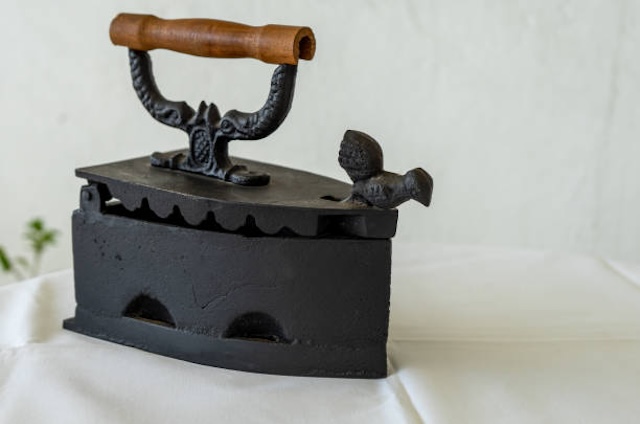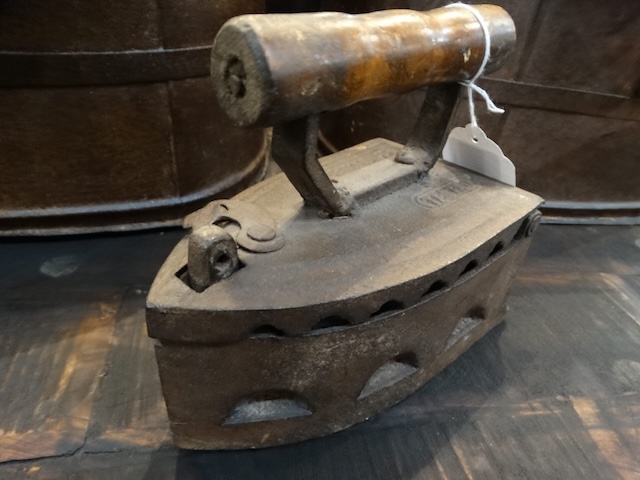The antique ironing clothes tool, captured beautifully in the image, evokes a nostalgic connection to a bygone era where electric appliances were a luxury and household tasks relied on human effort and ingenuity. The item in the image represents an early form of the iron, used when garments were pressed to perfection by heating the base of this heavy device on an open flame or stove.
The Origins of Ironing
Before modern-day conveniences like steam irons, early forms of irons like this one, known as flat irons, were integral to everyday life. Made from cast iron, these devices were heated over a fire or stove and used to smooth clothes. Without temperature control, maintaining an even heat was challenging, requiring users to constantly heat and switch out irons as they cooled. The handles, often made of wood, were designed to stay cool enough to touch, although some early models didn’t offer such convenience, forcing users to wear protective clothes or gloves.

Why It Was Essential
During the 18th and 19th centuries, clean and neatly pressed clothing was a symbol of respectability and class. This tool wasn’t just a household item; it played a role in societal standards, ensuring that people presented themselves properly. Even for the less affluent, maintaining garments was important. Households typically owned more than one iron to ensure a continuous process of heating and pressing. Using irons like these was labor-intensive, but they were prized possessions for their efficiency in helping to maintain a respectable appearance.
The Evolution of the Iron
The antique ironing clothes tool like this one paved the way for the electric iron that revolutionized laundry routines in the 20th century. The cast-iron versions were followed by models that included more advanced features like detachable handles or hollow bases that allowed for the insertion of hot coals. While the basic flat iron was useful, it also signaled innovation and the constant strive for better household solutions. As cities and towns began to modernize, irons adapted, with electricity eventually replacing heat from open flames.

Interesting Facts About Irons
- These irons, sometimes referred to as “sad irons” (from the old English term meaning heavy), often weighed between five and ten pounds.
- Professional laundresses had multiple irons so they could maintain a workflow while one was heating, and another was in use.
- The evolution of irons gave rise to the steam iron in the 1920s, which introduced moisture into the pressing process, making the task easier and more efficient.
- Early patents for irons date back to the 1800s, with many inventors seeking to improve on the heavy and cumbersome designs like the one pictured.

The Legacy of the Antique Iron
Today, the antique ironing clothes tool is a testament to the resilience and inventiveness of past generations. Although no longer used in daily life, these irons are highly sought after by collectors, history enthusiasts, and those with an appreciation for vintage design. The rustic look, the sheer weight, and the practicality of this item all offer a fascinating glimpse into the past, reminding us how far we have come in terms of household technology.

Despite the simplicity of the design, this iron had a profound impact on domestic life, shaping standards of cleanliness and appearance that are still important today. Looking at this piece now, one can’t help but admire the craftsmanship and resilience of those who relied on such tools to care for their families and homes.

Conclusion
The antique ironing clothes tool is not merely a relic of the past but a symbol of everyday determination and the quest for efficiency in household tasks. Its heavy, utilitarian design might seem obsolete today, but it represents a crucial step in the evolution of home appliances. From the hearths of old to modern electric outlets, the humble iron has come a long way, and this artifact helps us remember the efforts behind keeping clothes neat and crisp before modern technology simplified the task.



